Scientists Project Path of Radiation Plume
A United Nations forecast of the possible movement of the radioactive plume coming from crippled Japanese reactors shows it churning across the Pacific, and touching the Aleutian Islands on Thursday before hitting Southern California late Friday.
Health and nuclear experts emphasize that radiation in the plume will be diluted as it travels and, at worst, would have extremely minor health consequences in the United States, even if hints of it are ultimately detectable. In a similar way, radiation from the Chernobyl disaster in 1986 spread around the globe and reached the West Coast of the United States in 10 days, its levels measurable but minuscule.
The projection, by the Comprehensive Test Ban Treaty Organization, an arm of the United Nations in Vienna, gives no information about actual radiation levels but only shows how a radioactive plume would probably move and disperse.
It's comforting the U.N. can tell us levels will be "measurable but minuscule," hours, days, weeks, or months before this event's conclusion. More information, less placation would be appreciated.
U.S. radiation experts try to decipher reports from Japan Note: This is a perfect example of a "Privatized Response" to a "Potentially Catastrophic" Event. The myth that all corporations (Or really ANY) can handle disaster response better than a government response Has Got To Stop. I'm not Pro-Government Intrusion (By any stretch), but to what level of shitty, incompetent, negligent, or murderous does a Corporate response have to be before Someone steps in? Is the Japanese government concerned about offending the Company that put potentially ALL of Us in danger? And the Government's response (nothing/lying) is worse. I feel bad for the Japanese. They used to trust their government and found out otherwise, the hard way.. Day 6 coming up, no end in sight, no way to tell what miracle it would take just for this to STOP.
Excerpts:
The Japanese government's radiation report for the country's 47 prefectures Wednesday had a notable omission: Fukushima, ground zero in Japan's nuclear crisis. Measurements from Ibaraki, just south of Fukushima, were also blanked out.
Radiation experts in the USA say that the lack of information about radioactivity released from the smoldering reactors makes it impossible to gauge the current danger, project how bad a potential meltdown might be or calculate how much fallout might reach the USA.
Conflicting accounts of the radiation levels emerged in Tokyo and on Capitol Hill. Japan's Nuclear and Industrial Safety Agency said Wednesday that the radiation detected at the Fukushima plant had fallen steadily over the past 12 hours. But U.S. Nuclear Regulatory Commission (NRC) chief Gregory Jaczko told a House energy subcommittee earlier in the day that radiation levels at the Fukushima plant were "extremely high."
Japan earthquake: US alarm over nuclear crisis From The BBC.
"They are leaving us to die," says the mayor of Minamasoma inside the exclusion zone.
..
Britain has now advised its nationals currently in Tokyo and to the north of the capital to consider leaving the area.
..
On Thursday, army helicopters dumped tonnes of water on reactor three - a day after they were forced to pull out amid concerns over radiation levels in the air above the site.
10,000 people go to get radiation exposure tests in Fukushima Pref.
About 10,000 people headed to evacuation centers and health offices in Fukushima Prefecture on Wednesday to take screening tests for exposure to radiation in the wake of troubles at the Fukushima No. 1 nuclear plant following the massive earthquake, prefectural officials said Thursday.
G-7 to hold emergency talks on Japan quake, economic impact
The Group of Seven advanced economies will hold emergency talks by phone on the massive earthquake in Japan last week and its impact on the economy and financial markets, Japanese Finance Minister Yoshihiko Noda said Thursday.
..
The move comes as the yen briefly strengthened to a postwar record high of 76.25 yen versus the U.S. dollar earlier in the day in Sydney, passing through the previous peak of 79.75 yen reached in 1995. It traded at the lower 79 yen level Thursday afternoon in Tokyo.
Third wave impacts from the Earthquake/Tsunami will begin shortly within the Markets. Speaking of which..
Guest Post: Alert: Nuclear (And Economic) Meltdown In Progress Tyler Durden isn't kidding.
Note: The substance of this alert centers on the unknown aftershocks that may result from the world's third largest economy, Japan, rapidly shifting from an exporter of funding to a consumer of it. In situations like these, we are by definition operating with incomplete and often confusing information, and events are developing more rapidly than they can be fully analyzed and internalized. We regret in advance any mistakes that we might make due to making calls and decisions in this highly fluid environment.
And:
Stage 1: The world watches, riveted, as Japan suffers a tragic and horrible earthquake and tsunami, but as horrifying as these are, they are localized phenomenon affecting a relatively small percentage of the country. The real trouble lurks within damaged nuclear plants, which are now ruined and will never again produce electricity for Japan, creating instant shortages that will take years to remedy. Worse, a dangerous plume of radioactivity is carried south by winds. Tokyo partially empties and shuts down for all practical purposes.
Stage 2: The abrupt slow down of the world's third largest economy alters the smooth flow of cash around the globe, and even causes reversals of some other long-standing flows. Chaotic eddies emerge in a decades-old pattern of ever-increasing flows of money into and out of the money centers, and various carry-trade and other interest-rate-sensitive strategies blow up. Manufacturing in Japan screeches to a halt, disrupting just-in-time manufacturing strategies both internally and across the globe.
Stage 6: Everything changes. Faster than you think.
Thousands flee Tokyo as experts try to calm contamination fears
The stuff of science fiction novels and bad disaster movies has arrived in the world's largest metropolis after radioactivity was detected in Tokyo's city centre yesterday, the possible prelude to a disaster forewarned but never really expected: the meltdown of a nuclear power plant and the showering of fallout over 28 million people.
Experts and government ministers said that the radiation levels in the city were negligible, and that the battle to save the stricken plant in Fukushima was making progress. But they warned that contamination within the danger zone around the plant, about 300km north-east of the capital, was dangerous to human health, and told people inside the zone to evacuate or stay indoors.
No hysterical outbursts, just an endless stream of quiet grief
Given the extraordinary stories that have been told and the amazing images that have been beamed around the world, there was perhaps nothing especially remarkable about the way in which the tsunami struck the port town of Higashi Matsushima, 90 minutes of east of the city of Sendai, epicentre of the earthquake. To the north, the toll of the dead and missing in some towns alone has reached more than 1,000. So if the grief appeared quietly subdued in Higashi Matsushima – a town where at least 320 people have lost their lives and many more remain unaccounted for – it is only because of the scale of this tragedy.
A United Nations forecast of the possible movement of the radioactive plume coming from crippled Japanese reactors shows it churning across the Pacific, and touching the Aleutian Islands on Thursday before hitting Southern California late Friday.
Health and nuclear experts emphasize that radiation in the plume will be diluted as it travels and, at worst, would have extremely minor health consequences in the United States, even if hints of it are ultimately detectable. In a similar way, radiation from the Chernobyl disaster in 1986 spread around the globe and reached the West Coast of the United States in 10 days, its levels measurable but minuscule.
The projection, by the Comprehensive Test Ban Treaty Organization, an arm of the United Nations in Vienna, gives no information about actual radiation levels but only shows how a radioactive plume would probably move and disperse.
It's comforting the U.N. can tell us levels will be "measurable but minuscule," hours, days, weeks, or months before this event's conclusion. More information, less placation would be appreciated.
U.S. radiation experts try to decipher reports from Japan Note: This is a perfect example of a "Privatized Response" to a "Potentially Catastrophic" Event. The myth that all corporations (Or really ANY) can handle disaster response better than a government response Has Got To Stop. I'm not Pro-Government Intrusion (By any stretch), but to what level of shitty, incompetent, negligent, or murderous does a Corporate response have to be before Someone steps in? Is the Japanese government concerned about offending the Company that put potentially ALL of Us in danger? And the Government's response (nothing/lying) is worse. I feel bad for the Japanese. They used to trust their government and found out otherwise, the hard way.. Day 6 coming up, no end in sight, no way to tell what miracle it would take just for this to STOP.
Excerpts:
The Japanese government's radiation report for the country's 47 prefectures Wednesday had a notable omission: Fukushima, ground zero in Japan's nuclear crisis. Measurements from Ibaraki, just south of Fukushima, were also blanked out.
Radiation experts in the USA say that the lack of information about radioactivity released from the smoldering reactors makes it impossible to gauge the current danger, project how bad a potential meltdown might be or calculate how much fallout might reach the USA.
Conflicting accounts of the radiation levels emerged in Tokyo and on Capitol Hill. Japan's Nuclear and Industrial Safety Agency said Wednesday that the radiation detected at the Fukushima plant had fallen steadily over the past 12 hours. But U.S. Nuclear Regulatory Commission (NRC) chief Gregory Jaczko told a House energy subcommittee earlier in the day that radiation levels at the Fukushima plant were "extremely high."
Japan earthquake: US alarm over nuclear crisis From The BBC.
"They are leaving us to die," says the mayor of Minamasoma inside the exclusion zone.
..
Britain has now advised its nationals currently in Tokyo and to the north of the capital to consider leaving the area.
..
On Thursday, army helicopters dumped tonnes of water on reactor three - a day after they were forced to pull out amid concerns over radiation levels in the air above the site.
10,000 people go to get radiation exposure tests in Fukushima Pref.
About 10,000 people headed to evacuation centers and health offices in Fukushima Prefecture on Wednesday to take screening tests for exposure to radiation in the wake of troubles at the Fukushima No. 1 nuclear plant following the massive earthquake, prefectural officials said Thursday.
G-7 to hold emergency talks on Japan quake, economic impact
The Group of Seven advanced economies will hold emergency talks by phone on the massive earthquake in Japan last week and its impact on the economy and financial markets, Japanese Finance Minister Yoshihiko Noda said Thursday.
..
The move comes as the yen briefly strengthened to a postwar record high of 76.25 yen versus the U.S. dollar earlier in the day in Sydney, passing through the previous peak of 79.75 yen reached in 1995. It traded at the lower 79 yen level Thursday afternoon in Tokyo.
Third wave impacts from the Earthquake/Tsunami will begin shortly within the Markets. Speaking of which..
Guest Post: Alert: Nuclear (And Economic) Meltdown In Progress Tyler Durden isn't kidding.
Note: The substance of this alert centers on the unknown aftershocks that may result from the world's third largest economy, Japan, rapidly shifting from an exporter of funding to a consumer of it. In situations like these, we are by definition operating with incomplete and often confusing information, and events are developing more rapidly than they can be fully analyzed and internalized. We regret in advance any mistakes that we might make due to making calls and decisions in this highly fluid environment.
And:
Stage 1: The world watches, riveted, as Japan suffers a tragic and horrible earthquake and tsunami, but as horrifying as these are, they are localized phenomenon affecting a relatively small percentage of the country. The real trouble lurks within damaged nuclear plants, which are now ruined and will never again produce electricity for Japan, creating instant shortages that will take years to remedy. Worse, a dangerous plume of radioactivity is carried south by winds. Tokyo partially empties and shuts down for all practical purposes.
Stage 2: The abrupt slow down of the world's third largest economy alters the smooth flow of cash around the globe, and even causes reversals of some other long-standing flows. Chaotic eddies emerge in a decades-old pattern of ever-increasing flows of money into and out of the money centers, and various carry-trade and other interest-rate-sensitive strategies blow up. Manufacturing in Japan screeches to a halt, disrupting just-in-time manufacturing strategies both internally and across the globe.
Stage 6: Everything changes. Faster than you think.
Thousands flee Tokyo as experts try to calm contamination fears
The stuff of science fiction novels and bad disaster movies has arrived in the world's largest metropolis after radioactivity was detected in Tokyo's city centre yesterday, the possible prelude to a disaster forewarned but never really expected: the meltdown of a nuclear power plant and the showering of fallout over 28 million people.
Experts and government ministers said that the radiation levels in the city were negligible, and that the battle to save the stricken plant in Fukushima was making progress. But they warned that contamination within the danger zone around the plant, about 300km north-east of the capital, was dangerous to human health, and told people inside the zone to evacuate or stay indoors.
No hysterical outbursts, just an endless stream of quiet grief
Given the extraordinary stories that have been told and the amazing images that have been beamed around the world, there was perhaps nothing especially remarkable about the way in which the tsunami struck the port town of Higashi Matsushima, 90 minutes of east of the city of Sendai, epicentre of the earthquake. To the north, the toll of the dead and missing in some towns alone has reached more than 1,000. So if the grief appeared quietly subdued in Higashi Matsushima – a town where at least 320 people have lost their lives and many more remain unaccounted for – it is only because of the scale of this tragedy.










































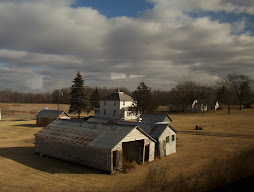




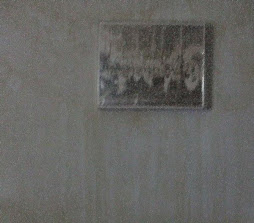






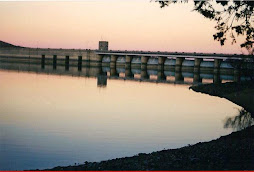






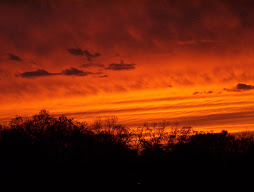
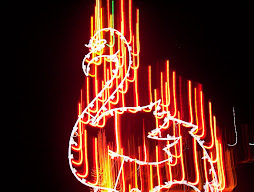




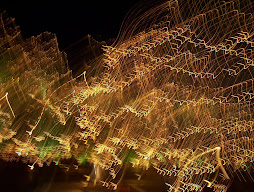

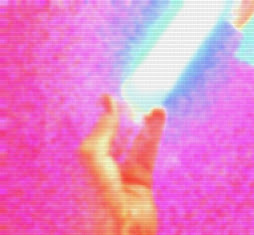










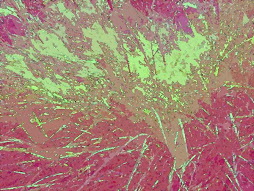
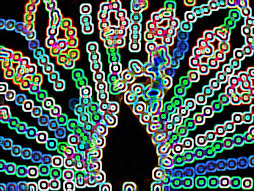









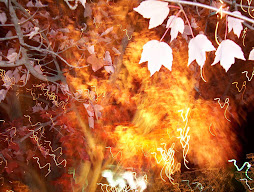









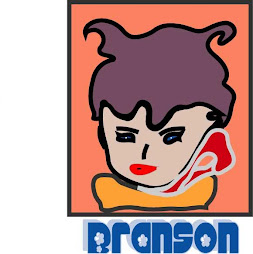



No comments:
Post a Comment